Hybridization of Camellia species and study on chromosome of hybrids
Shen Yunguang, Wang Zhonglang*, Feng Baojun, Xie Jian
Kunming Institute of Botany, Chinese Academy of Sciences, Kunming 650204, China
* Author for correspondence, e-mail: wang@mail.kib.ac.cn
Introduction
In the genus Camellia four species, C. japonica, C. reticulata, C. sasanqua and C. nitidissima, are the most important ornamental plants. According to Min (2000), the genus Camellia has around 120 wild species in the world, in which China is the original center and distribution center and has nearly 100 species, accounting for more than 80% of total numbers. China has a long history of Camellia cultivation and has literary records dating back to the Tang Dynasty (Xia 2003). At the beginning of the 7th century Japan first introduced the plant of C. japonica from China, and in 17th century, introduced a semi-double form of C. reticulata from Yunnan (Xia 2003). In 1740 camellias reached European countries (Ackerman, 1971), and gradually spread to USA and Australia. Many of them have been very important breeding materials in these countries.
It is well known that hybridization may occur at three levels, intraspecific, interspecific and intergeneric crosses, each progressively more difficult to accomplish. The first interspecific hybrids produced were the Williamsii hybrids, crosses between C. saluenensis and C. japonica made in the early 1930’s (Ackerman 1978). In our country, although we have very rich camellia resources, the hybridization started late, and had not been emphasized till recent years. Most ornamental camellias have no fragrance, with flower color from white to red, other than yellow flowers in Sect. Chrysantha. The species C. reticulata has big and bright flowers, but less hardiness, and the shape of the tree is loose with fewer branches. To breed new cultivars with fragrance, rich color, strong hardiness, compact and dense plants, has been the common objectives for camellia breeders for many years. In this paper, we focused on the target, some controlled pollinations that were carried out in Kunming Botanical Garden in recent years.
Camellia is a woody plant that commonly needs more than five years to bloom from seedlings. In order to identify the seedling earlier, it is necessary to check chromosomes in the early stage of hybridization. Ackerman (1971) had already used this technique to study hybridization in the genus Camellia. In China, we have many chromosome researches on camellias, but most of them concentrated on the wild species, we hardly ever found it to be used in cultivated plants for hybridization purposes (Xia 1994). In this paper we report some results on chromosome checks of 5 cross combination together with the comparison of morphological characters, in order to identify hybrids in the early stage.
Material and methods
Material
Cultivars of Camellia reticulata Lindl., C. japonica L. and other species of Camellia from the Kunming Botanical Garden were used as parents of hybridization. These plants are in the ground or in pots. Chromosome studies of F1 hybrids’ root tip cells were made.
Methods
Hybridization of Camellia species and cultivation of hybrid seedlings
From December 2007 to March 2010, controlled pollination was made in the blooming season of Camellia species. After 9:00am on a sunny day, the flowers to be used as female parents were emasculated by cutting out the stamens with attached anthers before dehiscence. Then the male parent’s pollen was laid on the stigma of emasculated flower. Both fresh and stored pollen were used for making controlled crosses. In many cases, the blooming seasons of parental species to be hybridized do not overlap and pollen must to be collected in advance and stored for later use. The pollen can be dried at room temperature for several hours and then stored in a small plastic centrifuge tube at 4℃. After pollination the flowers of female parent were labelled and covered with paper or cotton bags for protection from pollination by insects. About one or two weeks later the bag could be removed when the stigma became black.
Approximately one or two months after pollination, the development of ovaries was observed. In September, capsules were individually collected and recorded. Seeds were sowed in the perlite when capsules dehisced. Root tips could be cut when the radicle roots grew to 2cm in length. This method could stimulate lateral roots to grow after which, growing seedlings should to be transplanted into red soil. The ratio of seedling to seed was calculated.
Observation of root tip cell chromosome of hybrids
Actively growing root tips were collected from hybrids at 9:00-11:00 am. Root tips were pre-treated with 0.002M 8-hydroxyquinoline for 6h at 12-15℃, then washed with distilled water. The washed root tips were fixed in acetic acid-ethanol (1:3) for 15-20h at 4℃, and then stored in 70% ethanol at 4℃ until required.
Fixed root tips were hydrolysed in 1N HCL for 1-1.5min at 60℃, and then washed. Root tips were stained with 1% aceto-orcein for one night at room temperature. Next day the stained root tips were cut and the squash technique was employed (Li & Zhang,1991). Mitotic cells were observed by light microscope and well-squashed representative cells were photographed. The chromosome of each individual was counted
Results
During the blooming season of Camellia from 2007 to 2010, a total of 623 flowers were pollinated, including 137 cross combinations. In these combinations, 129 were interspecific hybridizations that belong to distant hybridization. Distant hybridization has a lower affinity, so only 14 hybridizations produced capsules (Table 1). Most of ovaries did not develop or only developed to an early stage, then fell off after one or two months. According to the cross results (Table 1), the combinations which used C. reticulata ‘Fenyulan’ as female parent had the highest ratio of capsule and seedling. The ratios were over 70%. The capsules developed well and had many good seeds. The second was the backcross hybridizations between C. nitidissima and F1 hybrid (C. reticulata ÍC. nitidissima), their ratios of F2 capsules also exceeded 70%, but seeds were very small and did not developed well enough although many seeds were obtained. This factor led to seeds that could not germinate or stopped at the hypocotyls stage, and sometimes seeds had already died before true leaf come out, so the ratio of seedling of F2 backcross hybridization is 0. The cross using C. nitidissima as male parents had the same result. Although some hybrid seeds could be obtained, they were not well developed, most of them were dry and empty or dehisced easily. Even if some hybrid seeds could germinate, they could not develop into seedlings. So no seedlings could be achieved from the combination of C. nitidissima.
Table 1 14 crosses in Camellia resulting in hybrid plants
|
Crosses |
No. of flower |
No. of capsules |
Ratio of capsules to pollination % |
No. of seeds |
No. of seeds germ- |
Number of hybrid seedlings |
Ratio of seedling to seed % |
|
|
Female♀ |
Male♂ |
|||||||
|
C.nitidissima |
F1 hybrid of C. reticulata and C. nitidissima |
17 |
13 |
76.5 |
56 |
4 |
0 |
0 |
|
C. japonica ‘Hototogisu’ |
C. japonica ‘Margaret Davis’ |
14 |
1 |
7.1 |
3 |
3 |
2 |
66.7 |
|
C. japonica ‘Elegans Champagne’ |
5 |
3 |
60.0 |
11 |
7 |
5 |
45.4 |
|
|
C. reticulata ‘Fenyulan’ |
C. reticulata ‘Jiuxin Zipao’ |
2 |
2 |
100 |
15 |
13 |
13 |
86.7 |
|
C. reticulata ‘Yanzhi’ |
4 |
3 |
75.0 |
22 |
16 |
16 |
72.7 |
|
|
C. ‘Terrell Weaver’ |
1 |
1 |
100 |
7 |
6 |
6 |
85.7 |
|
|
C. japonica ‘Hototogisu’ |
C. nitidissima |
16 |
1 |
6.3 |
2 |
0 |
0 |
0 |
|
C. reticulata |
11 |
1 |
9.1 |
2 |
2 |
0 |
0 |
|
|
F1 hybrid of C. reticulata and C. nitidissima |
39 |
7 |
17.9 |
19 |
6 |
0 |
0 |
|
|
C. reticulata ‘Shizitou’ |
C. grijsii |
11 |
1 |
9.1 |
6 |
1 |
1 |
16.7 |
|
C. reticulata ‘Dataohong’ |
C. saluenensis |
3 |
1 |
33.3 |
5 |
0 |
0 |
0 |
|
C. reticulata ‘Xiaoyinhong’ |
4 |
1 |
25.0 |
1 |
1 |
1 |
100 |
|
|
C. reticulata ‘Zaotaohong’ |
9 |
3 |
33.3 |
19 |
15 |
13 |
68.4 |
|
|
C. reticulata ‘Damanao’ |
C. edithae |
3 |
1 |
33.3 |
2 |
2 |
2 |
100 |
After seeds germinated, the chromosome of root tip cells of 5 crosses’ seedlings was observed. The chromosome number ofF1 hybrids (C. japonica ‘Hototogisu’ Í C. japonica ‘Margaret Davis’) is 2n=45 (Fig. 1D). The F1(C. japonica ‘Hototogisu’ Í C. japonica ‘Elegans Champagne’ )is 2n=30 (Fig. 1C). The F1(C. reticulata ‘Xiaoyinhong’Í C. saluenensis) is 2n=60 (Fig. 1A). The F1(C. reticulata ‘Damanao’Í C. edithae) is 2n=60 (Fig. 1B). The F1(C. reticulata ‘Zaotaohong’ Í C. saluenensis) is 2n=90 (Fig. 1E)
 |
 |
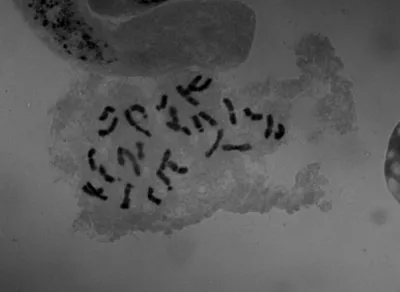 |
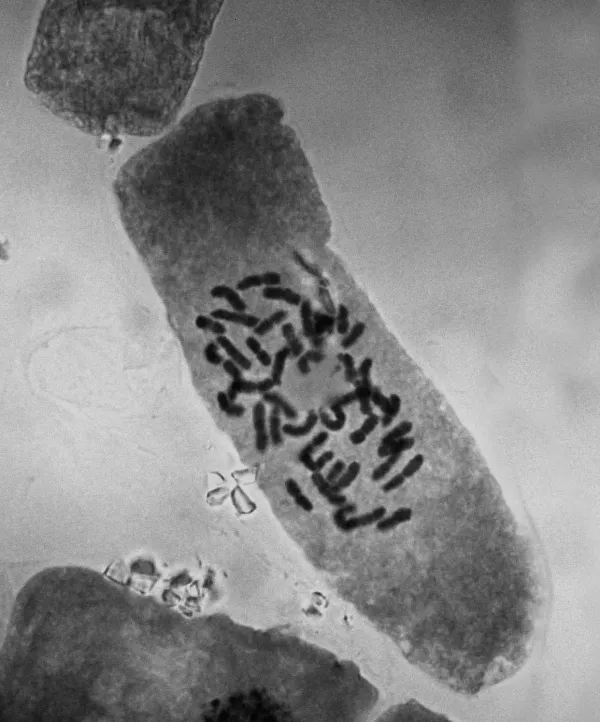 |
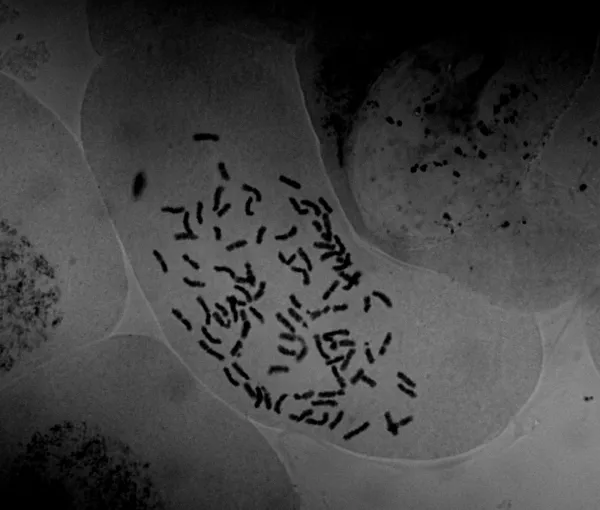 |
Fig. 1 The chromsomes in root tip cells from five combinations’ seedlings
A. ‘Xiaoyinhong’ X C. saluenensis B. ‘Damanao’ X C. edithea C. ‘Hototogisu’ X ‘Elegans Champagne’
D. ‘Hototogisu’ X ‘Margaret Davis’ E.’Zaotaohong’ X C. saluenensis
Discussion
From the results of this study, although the time was limited and the number of pollinated flowers and the number of hybrid capsules was still low, it is hard to have significance statistics, but very big differences could be found among the combinations. In 14 combinations that obtained capsules, the parents ‘Hototogisu’, ‘Elegans Champagne’ and ‘Margaret Davis’ are cultivars of C. japonica. ‘Terrell Weaver’ is the hybrid cultivar of C.japonica X C. reticulata ‘Dataohong’ (Savige 1993). All above belong to Sect. Camellia of Subgenus Camellia. The cultivars ‘Fenyulan’, ‘Jiuxin Zipao’, ‘Yanzhi’, ‘Shizitou’, ‘Dataohong’, ‘Xiaoyinhong’, ‘Zaotaohong’ and ‘Damanao’ are cultivars of C. reticulata. The species C. edithea and C. saluenensis also belong to Sect. Camellia. They have a closer relationship. The species C. yuhsiensis belongs to Sect. Paracamellia of Subgenus Camellia, but C. nitidissima belong to Sect. Archecamellia of Subgenus Thea, they have a much more distant relationship than with others. The closer the relationship of a combination, the easier it is to obtain hybrid seeds. For intraspecific cross within the same species, like ‘Fenyulan’ X ‘Jiuxin Zipao’ and ‘Yanzhi’ , ‘Hototogisu’ X ‘Margraret Davis’ and ‘Elegans Champagne’, the ratio of seedling is higher than those between species. For those combinations using C. nitidissima and C. yuhsienensis as parents, the ratio of seedlings is much lower than those of other combinations, especially those using C. nitidissima as parents, the hybrid seeds were not able to become seedlings. The cultivar ‘Fenyulan’ is a single form flower, and it is easy to obtain seeds in natural conditions, while the cultivars ‘Hototogisu’, ‘Shizitou’, ‘Dataohong’, ‘Xiaoyinhong’, ‘Zaotaohong’ and ‘Damanao’ have flowers with semi-double to double form. Their stamens and pistils are not well developed; the ratio of fruit set is lower. Thus, it is an important factor that the female parents have well developed pistils.
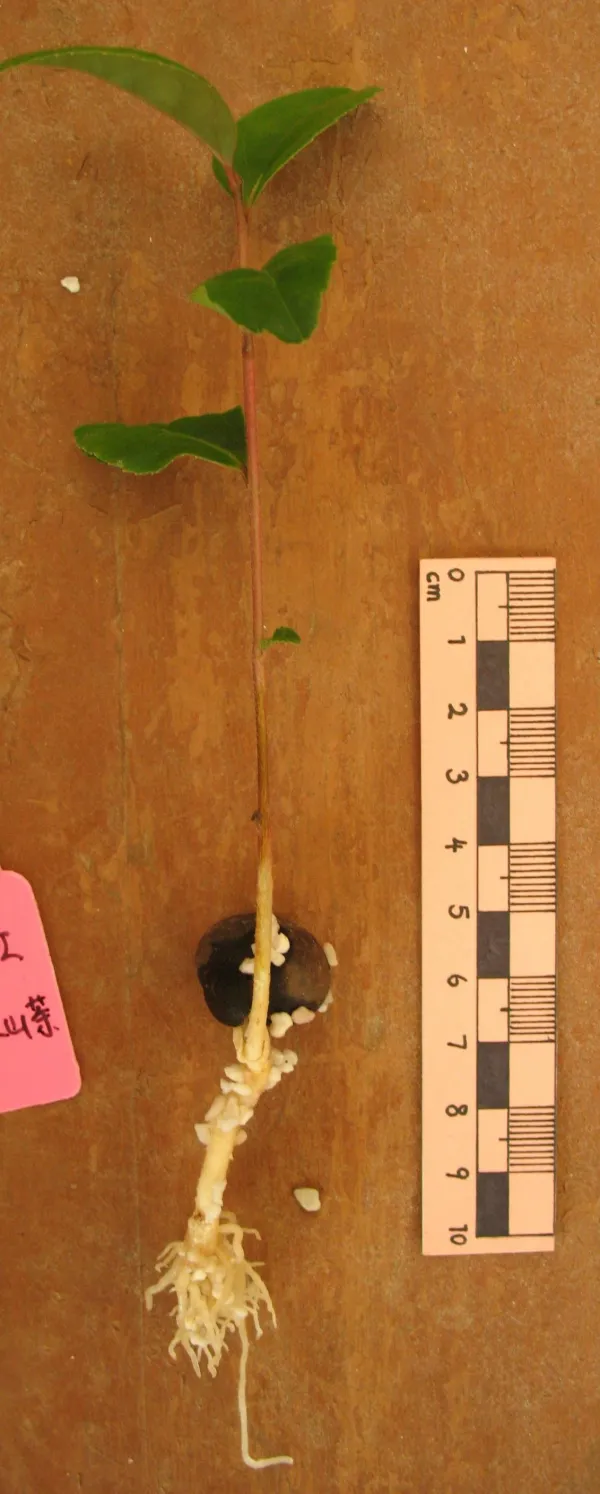
Fig. 2 To cut the root promote the growth of lateral and fibrous roots
C. reticulata is a plant with a tap root system, commonly has only one main root, with less lateral roots and fibrous roots. So the transplant of seedlings is difficult other than cutting the plant. In order to increase the ratio of seedlings, it is necessary to cut the root tip off when radicle is 1.5-2.0 cm long. This treatment will promote the growth of lateral and fibrous roots (Fig. 2), which benefit the survival of juvenile seedlings.
Table 2. The comparison of somatic cell’s chromosome number of parents and hybrids
|
Chromosome number of parents |
Chromosome number of hybrids |
|
|
Female♀ |
Male♂ |
|
|
C. japonica ‘Hototogisu’ (unreported) |
C. japonica ‘Elegans Champagne’ (unreported) |
2n=30 |
|
C. japonica ‘Hototogisu’ (unreported) |
C. japonica ‘Margaret Davis’ (unreported) |
2n=45 |
|
C. reticulata ‘Xiaoyinhong’ (unreported) |
C. saluenensis 2n=30 (Xia, 1994; Min, 2000; Kondo et al, 1986; Ackerman, 1971) |
2n=60 |
|
C. reticulata ‘Damanao’ 2n=90 (Ackerman, 1971) |
C. edithae 2n=30 (Min, 2000) |
2n=60 |
|
C. reticulata ‘Zaotaohong’ 2n=90 (Kondo et al, 1986) |
C. saluenensis 2n=30 (Xia, 1994; Min, 2000; Kondo et al, 1986; Ackerman, 1971) |
2n=90 |
From counting the results of hybrid’s chromosome, all matched the basic number of the genus Camellia, namely x=15, having four ploidal levels (Fig. 1, Table 2): diploid (2n=30), triploid (2n=45), tetraploid (2n=60) and hexaploid (2n=90). Among the parents, the cultivars ‘Hototogisu’, ‘Elegans Champagne’ and ‘Margaret Davis’ are cultivars of C. japonica, so far their chromosomes have not yet been reported. But as an important ornamental plant, C. japonica had many researches on chromosome, which showed different ploidal levels (2n=30, 45, 75 etc), most of them are diploid (Patterson et al. 1950, Min 2000). From the result in this paper, the hybrid between ‘Hototogisu’ and ‘Elegans Champagne’ had 30 chromosomes, while the hybrid between ‘Hototogisu’ and ‘Margaret Davis’ has 45 chromosomes. So the parents of ‘Hototogisu’ and ‘Elegans Champagne’ should be diploid (2n=30), while ‘Margaret Davis’ could be hexaploid (2n=60) or diploid (2n=30). It is easy to understand the possibility of hexaploid. The possibility of diploid is because the meiosis is not normal, sometimes it could produce double chromosome number other than the common haploid number, when it is crossed with normal diploid parents, the hybrid could be triploid. This possibility had been reported by Patterson (1950), so the chromosome number of ‘Margaret Davis’ needs to be further investigated. According to Ackerman’s (1971) study, when both parents had obviously different morphological characters, it could provide good evidence to observe the morphological characters of hybrids in the early stage.
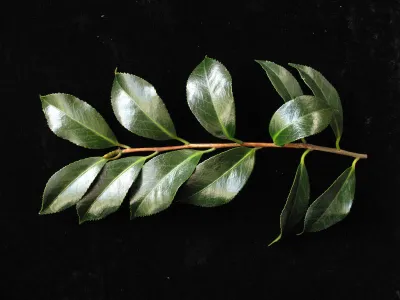 |
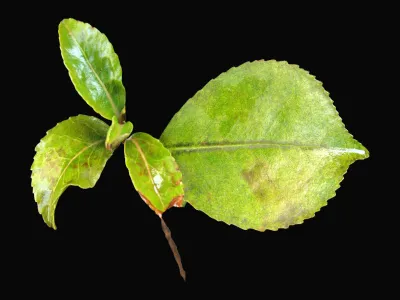 |
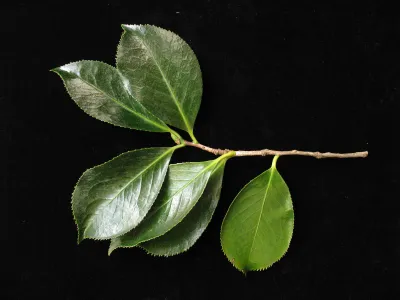 |
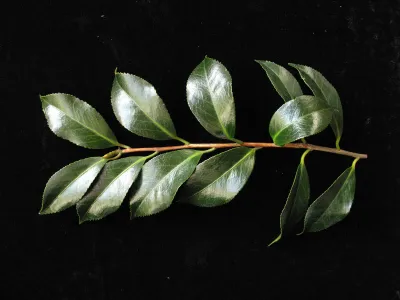 |
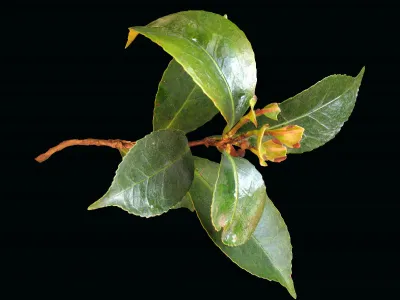 |
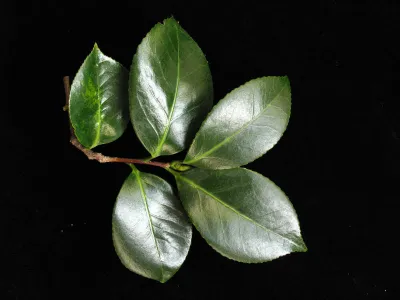 |
 |
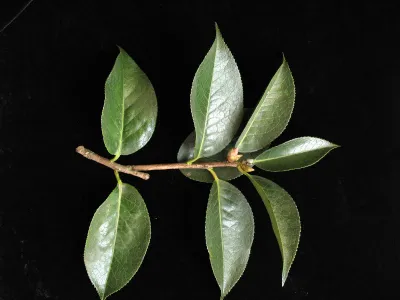 |
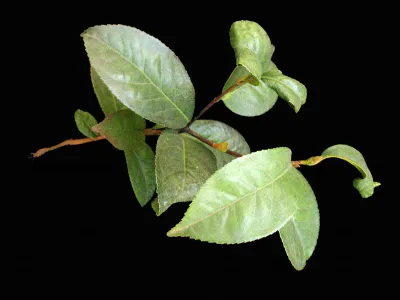 |
Fig. 3 Morphological Comparisons of F1 to their parents (from left to right: Female, F1, Male)
A. ‘Hototogisu’ B. F1 of ‘Hototogisu’ X ‘Elegans Champagne’ C. ‘Elegans Champagne’
D. ‘Hototogisu’ E. F1 of ‘Hototogisu’ X ‘Margaret Davis’ F. ‘Margaret Davis’
G. ‘Zaotaohong’ H. F1 of ‘Zaotaohong’ X C. saluenensis I. C. saluenensis
From the characters of hybrids ‘Hototogisu’ X ‘Elegans Champagne’ (Fig. 3A, B, C), ‘Hototogisu’ X ‘Margaret Davis’ (Fig. 3 D, E, F), the juvenile plants had already shown the intermediate characteristics. So these hybrids should be the true ones. The other three combinations, the parents C. saluenensis and C. edithea are diploid (2b=30), while ‘Zaotaohong’, ‘Damanao’ had already reported chromosome number 2n=90, same as most of wild C. reticulata (Paterson et al. 1950, Kondo et al 1986, Min 2000). The hybrid seedlings of both ‘Xiaoyinhong’ X C. saluenensis and ‘Damanao’ X C. edithea had tetraploidal number (2n=60), so these seedlings should be true hybrids, and one of parent ‘Xiaoyinhong’ should be hexaploid (2n=90). The seedlings from the combination ‘Zaotaohong’ (2n=90) X C. saluenensis (2n=30) still had hexaploid number (2n=90), and the morphological characters were also similar to maternal parent ‘Zaotaohong’, so these plants might not be hybrids (Fig. 3 G, H, I). So it is a fast and effective way to identify hybrids by the comparison of chromosomes and morphological characters in early stage.
References
Earl B. Patterson, Mary Olga Longley, Donald S. Robertson. 1950. Chromosome Numbers in Cultivated Camellias. American Camellia Yearbook: 107-113.
Katsuhiko Kondo, Zhijian Gu, Haiyan Na, Lifang Xia. 1986. A Cytological study of Camellia reticulata and its closely related species in Yunnan,China. La KromosomoⅡ—43-44: 1405-1419.
Thomas J. Savige. 1993. The International Camellia Register. Fine Arts Press Pty. Limited.
William L. Ackerman. 1971. Genetic and cytological studies with Camellia and related genera. U.S. Government Printing Office.
Feng Guomei, 1994. The discussion on Camellia bleedings in China. The proceedings of 3rd symposium on Camellia in China. 1-6. (In Chinese)
Li Maoxue and Zhang Maofang, 1991. The technics of chromosome research of plants. Harbin: Northeast Forestry University Press. (In Chinese)
Min Tienlu, 2000. Monograph of the genus Camellia. Kunming: Yunnan Sciences and Technology Press.
Xia Lifang. 1994. Cross compatibility in Camellia breeding and genetic patterns of hybrids. The proceedings of 3rd symposium on Camellia in China. 7-15 (In Chinese)
Xia Lifang, 2003. Camellia. Beijing: China architecture and building press.
Min Tienlu, 1997. Flora Yunnanica (Tomus 8). Beijing: Science Press.
Web design by Tribal Systems
